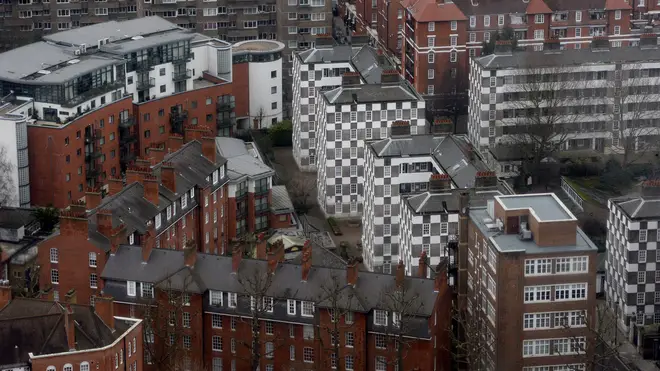
Paul Brand 4pm - 7pm
25 March 2024, 15:14

House prices have become more affordable since 2021, but remain in line with pre-coronavirus pandemic trends, the Office for National Statistics said.
Housing affordability improved in three-quarters (75%) of local authorities across England and Wales in 2023, compared with the previous year, according to the Office for National Statistics (ONS).
Affordability worsened in just under a quarter (24%) of local authorities and remained the same in 1%, the ONS said.
Average house prices increased in just over two-thirds (69%) of areas compared with 2022 – but average earnings increased in a bigger proportion of areas, at 88%.
Kensington and Chelsea in London was the least affordable area last year, with an average house price-to-earnings ratio of 34.3.

The most affordable was Burnley in Lancashire, with an average house price-to-earnings ratio of 3.7.
In 2023, 7% of areas typically had homes selling for less than five times the average earnings of workers. This was an improvement compared with 2022; however, in 1997, 88% of areas had this ratio.
The report said: “Therefore, affordability remains considerably worse than at the start of the series.”
Looking at England, in the 12 months to September 2023, the average home sold for £290,000, while average full-time earnings were £35,100.
This means that, in England, full-time employees could expect to spend 8.3 times their earnings on purchasing a home in their local authority area.
This represents an overall improvement in affordability compared with 2022, when the average home in England cost around 8.5 times the average wage.
Since 2022, housing affordability at a local level:
▪️ improved in 75% of local authority districts in England & Wales▪️ worsened in 24%▪️ stayed the same in 1%
Use our interactive map and explore housing affordability over time in your area.➡️ https://t.co/QsKhq5hKcF pic.twitter.com/j6Hlx11tWv
— Office for National Statistics (ONS) (@ONS) March 25, 2024
In Wales, the average home sold for £196,500 in the 12 months to September, while the average workplace-based full-time wage was £32,400.
This gave an affordability ratio of 6.1, down from 6.4 in 2022.
House sales prices have become more affordable since 2021, but remain in line with pre-coronavirus pandemic trends, the ONS said.
The affordability ratio doubled in England from the start of the records in 1997 to 2007.
In 1997, a home in England was worth around three-and-a-half times the average wage, but by 2007 buyers faced paying just over seven times their salary typically to buy a home.
In Wales, affordability ratios doubled from 1997 to 2005 and peaked at 6.6 in 2007. Since then, they have remained between 5.5 and 6.5, with a less pronounced increase and decrease in the past three years than in England, the ONS said.
Mortgage rates have jumped amid increases in the Bank of England base rate, meaning that some existing homeowners could have a payment shock when their deal expires.
Recent signs that inflation is cooling have raised expectations around the potential for the Bank of England to start cutting the base rate in the months ahead.